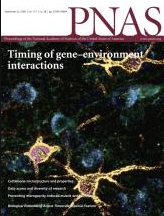
Hi all…an interesting ‘perspective’ on lead in drinking water appeared in today’s Proceedings of the National Academy of Sciences (PNAS). It appears to be freely accessible. It starts with “How Flint Happened, How it Happens Today, and How to Stop it Tomorrow” and ends with a “Call for Renewed Commitment to Lead Corrosion Science and Engineering.”
Figure 1 provides thermodynamic diagrams exhibiting the types of calculations that describe the Pb–drinking water system. Don’t let the title intimidate you, the figures are among the best in terms of visual quality that I have seen and really aren’t that difficult to learn something from. (Okay, I’ll be honest with you, I had to resist inserting a laughing emoji here-seriously though, take a look at it). It is a three part figure: (A) Chemical stability diagram highlighting the relative stabilities of various Pb-based compounds as a function of pH and total soluble Pb concentration, (B) The effect of water hardness in limiting available phosphate (aqueous) in drinking water, and (C) The effect of decreasing particle size on destabilizing the solid phase…
Bill_____________________________________
The pervasive threat of lead (Pb) in drinking water: Unmasking and pursuing scientific factors that govern lead release
Raymond J. Santucci Jra, and John R. Scully
Edited by Michael A. Celia, Princeton University, Princeton, NJ, and accepted by Editorial Board Member Pablo G. Debenedetti July 30, 2020 (received for review November 8, 2019)
PNAS | September 22, 2020 | vol. 117 | no. 38 | 23211–23218
https://www.pnas.org/content/117/38/23211.abstract?etoc
ABSTRACT
“The Flint water crisis raised questions about the factors resulting in unacceptable soluble lead concentrations in the city’s drinking water. Although water treatment strategies, failure to follow regulations, and unethical behavior were all factors, knowledge deficits at the intersection of several scientific fields also contributed to the crisis. Pursuit of opportunities to address unresolved scientific questions can help avert future lead poisoning disasters. Such advances will enable scientifically based, data-driven risk assessments that inform decisions involving drinking water systems. In this way, managers and decision makers can anticipate, monitor, and prevent future lead in water crises.”
Please join us for a virtual event as our experts share their insights on microplastics, including:
- Overview of current and anticipated regional and national regulations for microplastics, plastics, and plastic-associated additives
- Impacts and concerns for water and wastewater treatment processes
- Key elements to a successful monitoring campaign for MPs Traditional and emerging technologies for mitigation
- Recent and on-going research activities by Arizona Universities.”





